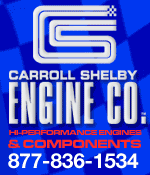dwisdom
The adjustment on the lifters is different between solid and hydraulid, as you know.
A solid lifter is a piece of the valve train that is of constant size, except for some heat expansion, which is much greater in the push rods. and is dialed in to give
oil clearance between the cam and lifter and the lifter and push rod and the push rod and the rocker arm and the rocker arm and the valve. When everything is in adjustment the vlave will close when the lifter is off the cam lobe and will not have any excess clearance, tappet noise, when the lobe comes around to lift the train and open the valve.
A hydraulic lifter is a variable piece of the same operation. The hydraulic lifter has its own spring to keep it in the open position. This spring keeps the lifter in contact with the pushrod and cam when the lifter is off the cam lobe. When the cam lobe comes up to the lifter, the lifter begins to compress, the lifter spring can't overcome the valve springs so the lifter is designed to have a specific movement before the valve train starts to move. This is accomplished with a floating valve disc. When the lifter travels its designed amount the disc valve stops the flow of
oil out of the lifter, and the lifter then becomes a solid (hydraulic) part of the valve train. After the cam lobe passes, and the lifter again rests on the cam small diameter the lifter spring opens the lifter to full length again and pulls in some
oil. This process circulates oil through the lifters and keeps them lubricated, clean and cool.
The disc valve won't stop oil flow but it slows it down enough for the valve to open and close on cue. The disc valve will allow oil to escape at a specific rate, the bleed down rate. If this is too fast the lifter will not hold the valve open long enough for proper lift and duration of the valves.
If you give the hydraulic lifter some clearance when is is fully expanded, you have limited the amount of travel that the valve train can make, due to the amount of travel that the lifter is capable of. You have then shortened the lift and duration of the valve because the lifter can move more than the .150" maximum adjustment limit. This will allow room for tappet noise because the lifter spring is not keeping the lifter and push rod pushed together when the valve is closed and the lifter is off the cam lobe.
Some 'pre adjustment', such as one turn after zero clearance, may be the 'correct pre adjustment' for the hydraulic lifters but you won't know for sure if they are in 'proper adjustment' until you do the clearance check with the lifters bleed down. This is the only way to know that you are in speck at all valves.
If you have adjustable rocker arms, the adjustment is as simple as it is on solid lifters. With non adjustable rockers the only way to change the valve lash is to change one of the components. Ford saw fit to make .060" longer and .060" shorter lifters, compaired to standard, on FE engines, to accomplish this adjustment. If this won't bring the valves into speck, then you have to replace enough components with new to make the proper clearance.


















 Linear Mode
Linear Mode



